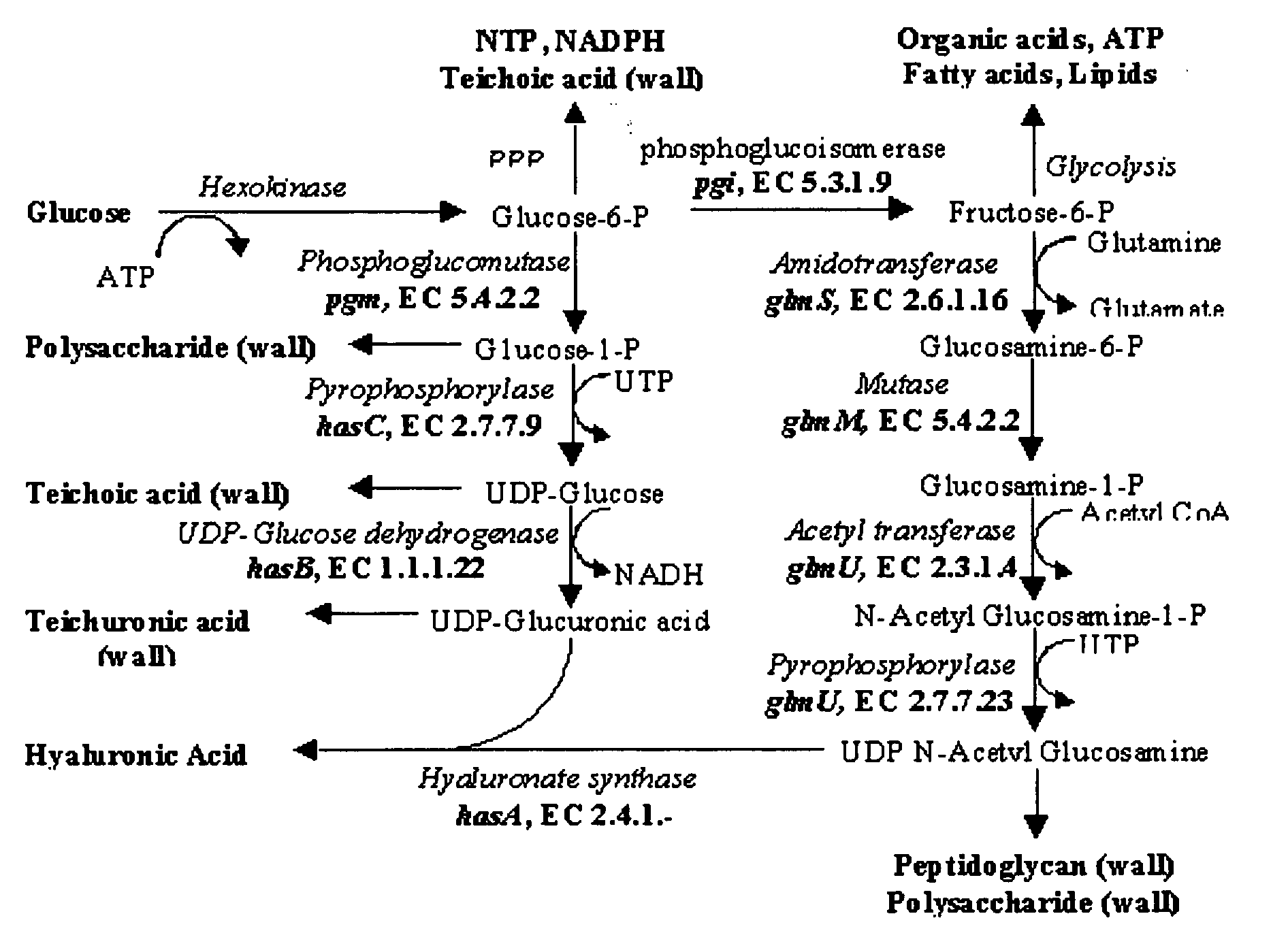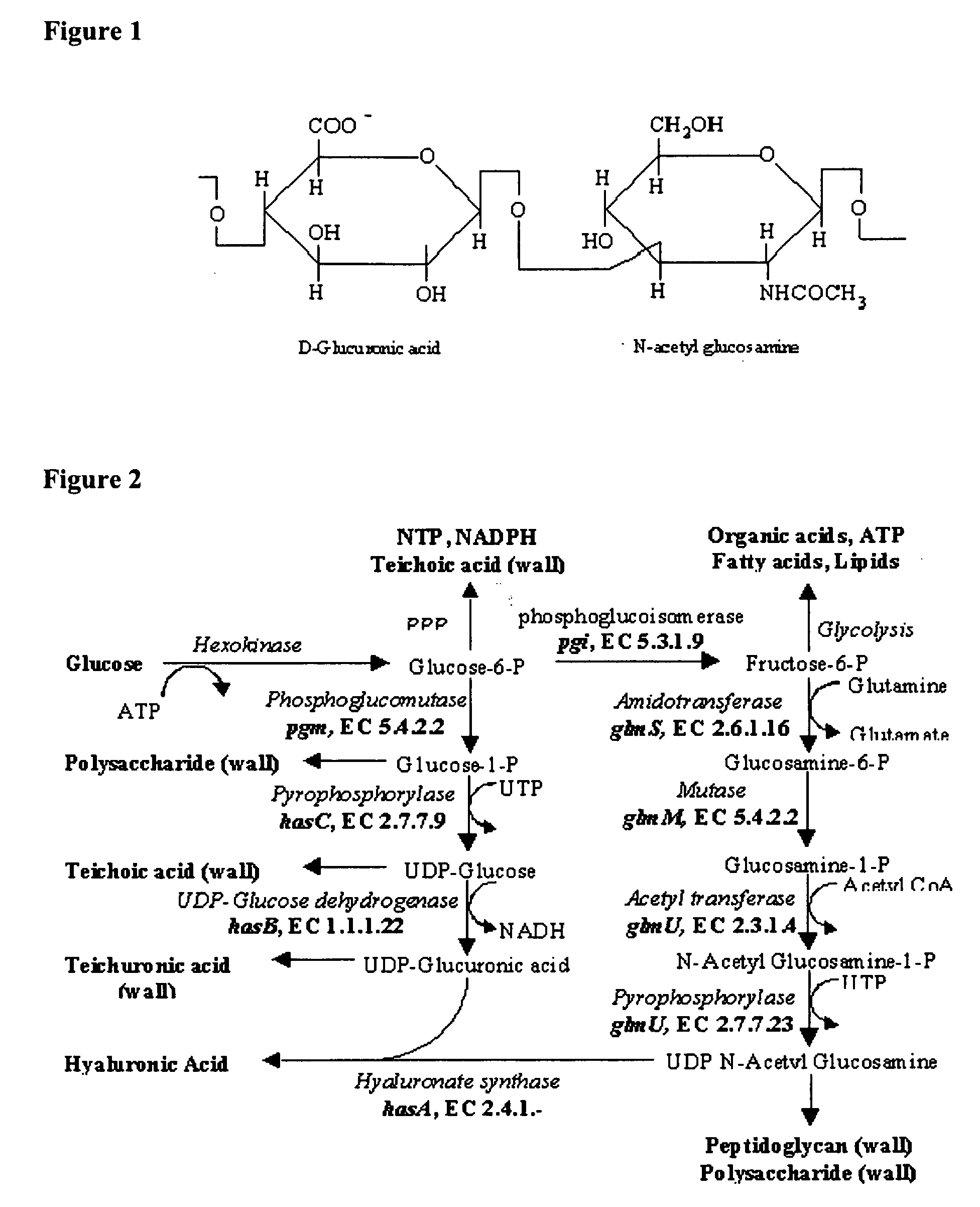Optimisation of culture conditions for production and process of purification of high molecular weight hyaluronic acid
a technology of hyaluronic acid and culture conditions, applied in the direction of fermentation, etc., can solve the problems of limiting the flexibility of hyaluronic acid, high molecular weight of ha, undesirable to have low molecular weight hyaluronic acid, etc., to achieve the effect of reducing the volume handling, reducing the amount of solvent, and efficient removal of protein impurities
- Summary
- Abstract
- Description
- Claims
- Application Information
AI Technical Summary
Benefits of technology
Problems solved by technology
Method used
Image
Examples
example 1
Bacterial Strain and Media
[0113]Streptococcus equi subsp. zooepidemicus ATCC 39920 was obtained from American Type Culture Collection. The bacteria were maintained on brain heart infusion agar or tryptic soy broth.
example 2
Estimation of HA
[0114]HA was routinely estimated by the carbazole assay (Bitter, T., and Muir, M., A modified uronic acid carbazole reaction. Anal Biochem 4: 330-334, 1962) in the fermented broth after precipitation with equal volume of isopropanol and redissolving in 3% Na-acetate solution.
example 3
Media Optimization
[0115]For media optimization experiments, the S. zooepidemicus was grown in a media constituting 2.5% casein hydrolyzate enzyme, 1% yeast extract, 0.2% K2HPO4, 0.15% NaCl, 0.04% MgSO4.7H2O, and 2% carbon source (sucrose). The organism was grown in Erlenmeyer flasks at 37° C. at 200 rpm for 24 h. For evaluating the effect of metal ions on HA production, filter sterilized solutions of CuSO4, ZnSO4 and MnSO4 were added to the medium at final concentration of 0.025%. See FIG. 5.
PUM
| Property | Measurement | Unit |
|---|---|---|
| temperature | aaaaa | aaaaa |
| molecular weight | aaaaa | aaaaa |
| molecular weight | aaaaa | aaaaa |
Abstract
Description
Claims
Application Information
 Login to View More
Login to View More - R&D
- Intellectual Property
- Life Sciences
- Materials
- Tech Scout
- Unparalleled Data Quality
- Higher Quality Content
- 60% Fewer Hallucinations
Browse by: Latest US Patents, China's latest patents, Technical Efficacy Thesaurus, Application Domain, Technology Topic, Popular Technical Reports.
© 2025 PatSnap. All rights reserved.Legal|Privacy policy|Modern Slavery Act Transparency Statement|Sitemap|About US| Contact US: help@patsnap.com



